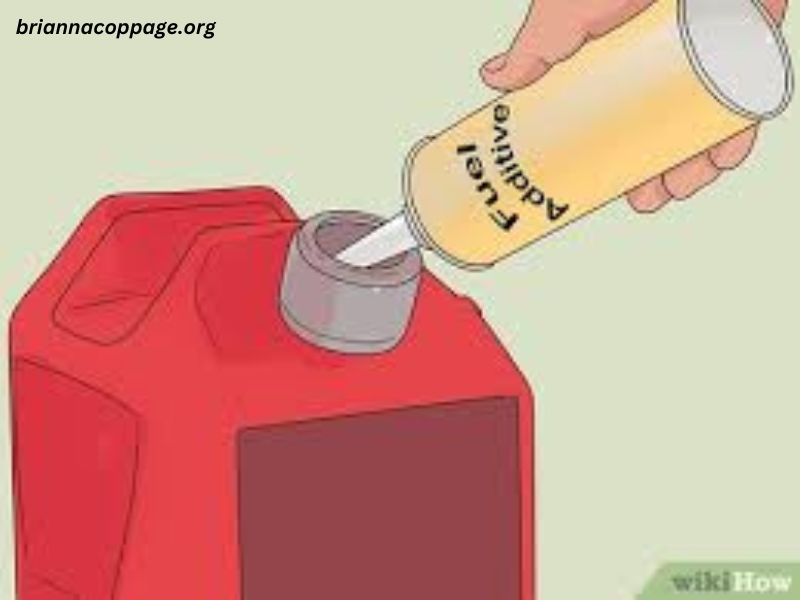Old gasoline can be problematic for a number of reasons. Over time, gasoline degrades, loses its combustibility, and can cause engine problems if used in vehicles or equipment. Additionally, storing gasoline improperly can lead to dangerous situations due to its flammability. Therefore, knowing how to properly dispose of or get rid of old gasoline is important for safety, the environment, and your equipment’s longevity. This guide explores several methods for safely dealing with old gasoline, from disposal options to tips on how to extend the life of gasoline.
Why Old Gasoline Is a Problem
Gasoline doesn’t have an indefinite shelf life. It begins to degrade over time due to exposure to air, light, and temperature changes. Most gasoline has a shelf life of 3 to 6 months when stored under normal conditions, although ethanol-blended fuels (like E10) may degrade faster. The degradation process leads to a decrease in performance, as the gasoline loses its ability to properly combust. Here’s why old gasoline is problematic:
- Engine Damage: Using stale gasoline can clog fuel injectors, lead to misfires, and reduce the efficiency of an engine.
- Corrosion: Gasoline can cause corrosion in metal parts when left to sit too long, especially if moisture has formed.
- Health and Environmental Risks: Improper disposal of gasoline can lead to contamination of water supplies, soil, and air, and pose fire hazards if exposed to an open flame.
Given these risks, it’s essential to handle old gasoline with care and ensure it is disposed of properly.
How to Tell If Gasoline Is Too Old
Before considering disposal options, it’s important to assess whether the gasoline is still usable. Here are a few signs that indicate gasoline has gone bad:
- Smell: Fresh gasoline has a characteristic, sharp odor. As gasoline ages, the smell becomes sour, similar to a varnish or paint thinner.
- Cloudy or Darkened Appearance: Gasoline should be clear. If it appears cloudy, darkened, or has particulates floating in it, it’s a sign that it’s no longer good.
- Separation: In gasoline blends containing ethanol, you may notice separation of the ethanol from the fuel, which indicates it has gone bad.
- Performance Issues: If you’ve already tried using the gasoline and your engine is misfiring or not running properly, it may be time to dispose of it.
If the gasoline still appears to be usable, it can be blended with fresh gasoline to dilute the old fuel and help improve combustion, but if it shows any of the above signs, it’s better to dispose of it properly.
How to Dispose of Old Gasoline Safely
There are several ways to dispose of old gasoline safely and responsibly. Let’s go over some of the most effective methods:
1. Take It to a Hazardous Waste Disposal Facility
One of the best ways to get rid of old gasoline is to take it to a local hazardous waste disposal facility. Gasoline is classified as hazardous waste due to its flammability and toxicity. Many local municipalities and counties have hazardous waste drop-off points where you can dispose of gasoline safely. Some facilities may accept gasoline in specific containers or have regulations on how it should be packaged, so it’s a good idea to contact the facility in advance to understand the requirements.
- What to Bring: Use a sturdy, sealable container (such as a plastic jug or metal can). Avoid using any containers that are not specifically designed to hold fuel.
- Cost: Disposal at a hazardous waste facility is often free, but some locations may charge a small fee depending on the amount you’re disposing of.
2. Find a Gasoline Recycling Service
Some areas have gasoline recycling services that take in old fuel, clean it, and repurpose it. These services typically work by filtering out contaminants and redistributing the fuel for use in industrial applications, or they may refine it into other products. Recycling gasoline is a great way to reduce environmental impact and ensure that the fuel doesn’t end up in a landfill or water source.
- How to Find a Recycling Service: You can search for recycling centers in your area through the Environmental Protection Agency (EPA) website or contact your local government for recommendations.
3. Use a Fuel Disposal or Exchange Program
Some gas stations or service centers may offer fuel exchange programs, allowing you to dispose of old gasoline by exchanging it for fresh fuel. These programs are more common in rural or industrial areas, where fuel-related activities are more prevalent. Participating in such a program can prevent gasoline from ending up in landfills and ensure it is disposed of safely.
- Inquire with Local Gas Stations: Call ahead to see if any local gas stations or auto shops participate in such programs. Many businesses will have guidelines on how to properly handle gasoline.
4. Burn the Gasoline (With Caution)
In some cases, if the gasoline is still relatively fresh and has only slightly degraded, it may be usable for a controlled burn. However, this is only a method for those with experience and knowledge of fire safety. This option is risky, so it is crucial to follow safety procedures and adhere to local laws about burning fuels.
- Outdoor Burning: Make sure to burn gasoline only outdoors and away from any buildings, flammable objects, or structures. You should also avoid burning it near water sources.
- Use a Proper Burner: A propane torch or other controlled burner may be used, but do not attempt to burn gasoline in a non-controlled environment.
5. Use the Gasoline in Lawn Equipment (If Safe)
In some cases, you can use old gasoline in outdoor equipment, such as lawnmowers, chainsaws, or generators. If the gasoline is only slightly aged and still seems usable (not showing signs of degradation), it can be mixed with fresh gasoline in a 50:50 ratio or less.
- Test First: If you’re unsure whether the gasoline will work, test it in a small amount of equipment first. If the engine runs smoothly, you can continue using the gasoline.
- Be Cautious: Don’t use old gasoline in high-performance equipment, as it could cause damage to engines and fuel systems.
6. Evaporation (Not Recommended for Large Quantities)
For very small amounts of gasoline (less than a gallon), some people choose to let it evaporate in a well-ventilated area, such as a garage or shed. However, this is not an ideal method due to safety and environmental concerns. Gasoline fumes are highly toxic, and the evaporation process still leaves behind potentially hazardous residues.
- Safety Concerns: If you choose this method, ensure proper ventilation, and never attempt it indoors or in confined spaces. It’s better to use a safer disposal method, especially for larger quantities.
Preventing Gasoline from Becoming Old
To reduce the need for disposal, here are some tips for prolonging the shelf life of gasoline:
- Store Gasoline Properly: Use gas cans that are designed for fuel storage and keep them in a cool, dry place, away from direct sunlight. Never store gasoline in glass or plastic containers that aren’t rated for fuel storage.
- Add Fuel Stabilizers: If you need to store gasoline for extended periods (e.g., for winter storage in small engines), use a fuel stabilizer. Fuel stabilizers can help extend the shelf life of gasoline for up to 12 months, reducing degradation.
- Label Containers: Keep track of when the gasoline was stored by labeling the container with the date it was filled. This will help you avoid using fuel that has been sitting for too long.
- Buy in Smaller Quantities: Only buy the amount of gasoline you need for immediate use. If you’re storing fuel for a lawnmower or other equipment, consider purchasing smaller amounts to reduce waste.
Conclusion
Old gasoline should never be treated casually, as improper disposal can harm the environment and pose serious risks to health and safety. Whether you decide to take your old gasoline to a hazardous waste facility, use it for recycling, or burn it safely in a controlled environment, always prioritize proper disposal. If you’re unsure of the best option, contact local waste disposal services for guidance. Additionally, by storing gasoline correctly and using stabilizers, you can minimize the occurrence of old fuel and reduce waste. Following these steps will ensure you handle old gasoline responsibly and safely, protecting your equipment, your surroundings, and the environment.






